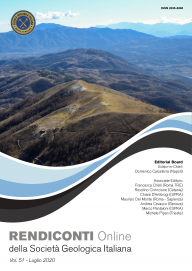
Estimation of the environmental impact of Military Exercises on a bombing range by employing radionuclide mapping and drone imaging
Jacques Bezuidenhout
Faculty of Military Science, Stellenbosch University, South Africa
Corresponding author e-mail: jab@ma2.sun.ac.za
Volume: 51/2020
Pages: 2-8
Abstract
A Gamma In Situ Potable Device (GISPI) was used to map naturally occurring radionuclides in an abandoned South African Air Force (SAAF) bombing range on the west coast of South Africa. The concentrations of potassium and radioactive progeny of thorium and uranium were measured and plotted with the help of QGIS software. The results demonstrated changes in radionuclide concentrations in specific areas of the ranges. These areas were correlated with areas where weapon testing and live bombing exercises were conducted. The areas were also surveyed and photographed with a drone. The article finally draws conclusions as to the environmental impact of the bombing on the area. This method can be used to investigate other bombing ranges in future quickly and effectively.
Keywords
Naturally occurring radionuclides, geographic information systems, QGIS, Military Activity, in situ measurements, radiometric mapping.
Get Full Text